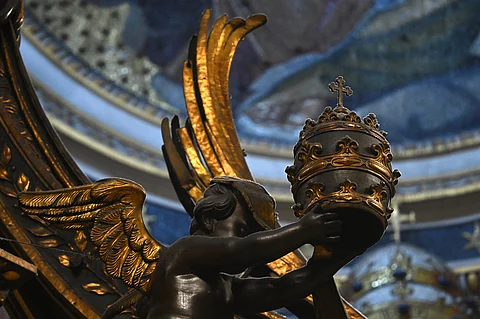
- NEWS
- the EDIT
- COMMENTARY
- BUSINESS
- LIFE
- SHOW
- ACTION
- GLOBAL GOALS
- SNAPS
- DYARYO TIRADA
- MORE

The passing of a pope is a moment of global significance, marked by deep sorrow, reverence, and a carefully structured set of rituals that have evolved over centuries. The Catholic Church, with its nearly two millennia of tradition, ensures that the transition from one papacy to the next is carried out with solemnity, respect, and unwavering faith in the continuity of its mission.
While Pope Francis, known for his humility and dedication to the poor, has simplified certain aspects of his eventual funeral rites, the essence of the process remains a sacred tradition, followed by billions of Catholics worldwide.
The official confirmation of a pope’s death follows a well-established procedure. The camerlengo, the papal chamberlain, enters the Holy Father’s private quarters and, in accordance with tradition, gently calls out his baptismal name three times. If no response is given, the anulus piscatoris, or Fisherman’s Ring — one of the primary symbols of the pope’s authority — is defaced, signifying the conclusion of his papacy. The papal apartments are then sealed, and the Vatican officially announces his passing to the world.
A nine-day period of mourning, known as the Novendiale, follows. Bells toll in Vatican City, and Italy typically declares a national mourning period. The pope’s body is prepared for public veneration, dressed in full papal vestments, and traditionally displayed on a raised platform, or catafalque, in St. Peter’s Basilica.
Pope Francis, however, has requested a simpler arrangement — his remains will rest in a single wooden coffin, accessible to all, without excessive grandeur.
The pope’s funeral, held in St. Peter’s Square, draws an immense gathering of world leaders, cardinals, bishops, and ordinary Catholics, all coming together in a final tribute to the leader of the Church. The air resonates with the solemn chants of the Sistine Chapel Choir, while incense drifts skyward in an ancient symbol of prayer ascending to heaven.
Historically, the Dean of the College of Cardinals presides over the Requiem Mass.
However, Pope Francis’ reforms place a greater emphasis on humility and accessibility, simplifying certain aspects of the ceremony. While past popes were buried within the Vatican Grottoes beneath St. Peter’s Basilica, Francis has chosen to rest in Santa Maria Maggiore, one of Rome’s oldest and most significant basilicas — a reflection of his deep devotion to the Virgin Mary and his desire to remain connected to the people.
Following the pope’s burial, the Church enters a period known as sede vacante, meaning “the seat is vacant.” During this time, the governance of the Church temporarily falls to the College of Cardinals, though no major doctrinal decisions can be made until a new pope is elected. This period of anticipation culminates in the highly secretive conclave, where cardinals from around the world gather in the Sistine Chapel to elect the next Supreme Pontiff.
The conclave follows strict protocols, including oaths of secrecy and multiple rounds of voting until one candidate secures a two-thirds majority. The process may take days or even weeks, but when a decision is finally reached, white smoke billows from the chapel’s chimney — a centuries-old signal that the Church has a new leader. The newly elected pope then steps onto the balcony of St. Peter’s Basilica to greet the faithful with the traditional words, Habemus Papam! — “We have a pope!”
A pope’s influence does not end with his passing. His teachings, his leadership, and the values he upheld continue to shape the Church for generations to come. Pope Francis’ legacy — his commitment to social justice, care for the marginalized, and passionate plea for environmental stewardship in Laudato Si’ — will remain a guiding force for Catholics worldwide.
Even in death, the leader of the Church serves as a reminder of faith, perseverance, and hope. His funeral is not just a farewell; it is a reaffirmation of the Church’s endurance, its mission to serve, and its unwavering belief in resurrection and renewal. The papal transition ensures that the seat of Peter never remains vacant for long, a testament to the enduring strength of a faith that has withstood the test of time.
